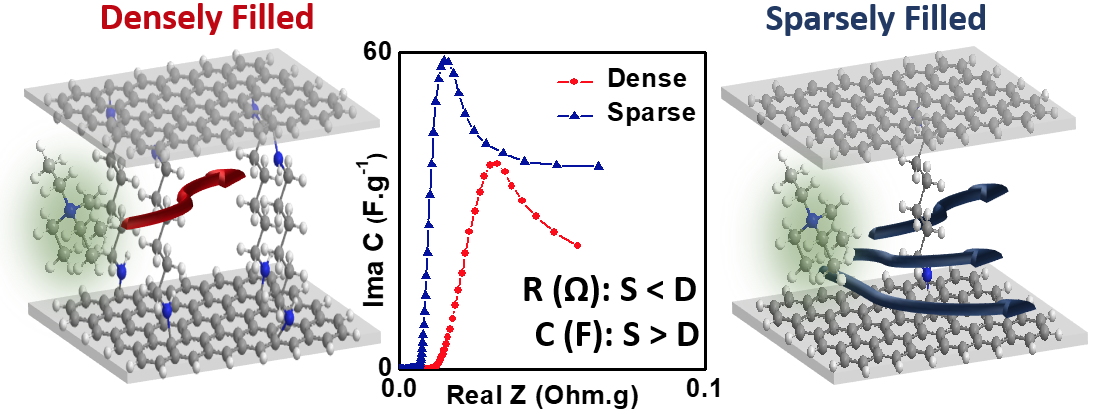A
supercapacitor (SC) is used to store electricity within a cell made up of two porous electrodes impregnated with electrolyte. These electrodes are separated by an insulating membrane and permeable to electrolyte species, which ad/desorb on the surface of the electrodes according to the potential applied across the device. To achieve optimal performance, the electrode material must have a large developed surface area. Additionally there must be a matching between the size of the micropores (where adsorbed takes place) and the diameter of the electrolytic ions. Can graphene present these two prerequisites?
Researchers at our laboratory use graphene because of its large specific surface area, electrical conductivity and mechanical flexibility. Reduced graphene oxide (RGO), a material close to graphene and tested for SCs, however, offers limited gravimetric capabilities. Indeed, graphene sheets tend to re-aggregate, thus reducing the surface area available for ion adsorption (
Figure, left). We had the idea to space the graphene sheets using a pillar molecule thus forming galleries of pillared graphene (
Figure, right).
 Schematic diagram between aggregated RGO graphene (left) and expanded pillared graphene (right).
Schematic diagram between aggregated RGO graphene (left) and expanded pillared graphene (right). We showed that the number of pillars in the galleries had a significant influence on the density of adsorbed electrolytic species and their transport kinetics: a median filling favours the access of ions to the galleries, increases the surface area available for adsorption and improves ion transport within this 2D porosity. The density of these samples was then modified to achieve higher volumetric capacitances.



Left: EIS data showing that the ionic transport resistance is lower and that the capacitance is higher for samples with galleries obtained from a lower amount of molecular pillar.
Right: Graphic art representing birds, in place of cations, accessing multi-level forest, in place of pillared graphene.
© Déborah Schrimm
The operating principle of a
supercapacitor (SC) is based on the adsorption of ions on the surface of charged electrodes, as well as on the migration kinetics of these ions within the cell. The parameters that describe the performance of SCs are energy and power densities. The energy density is directly proportional to the developed surface of the electrode and thus to the density of electrolyte species adsorbed at its surface.